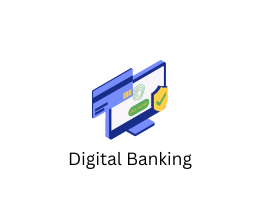
Cryptocurrencies and Blockchain Technology
- By admin --
- Sunday, 15 Oct, 2023
Cryptocurrencies and Blockchain Technology: Revolutionizing Finance and Beyond
In the last decade, cryptocurrencies and blockchain technology have emerged as disruptive forces in the world of finance and technology. What began with the creation of Bitcoin by an anonymous entity known as Satoshi Nakamoto in 2009 has blossomed into a diverse ecosystem of digital assets and decentralized ledger technology. This essay explores the fundamental concepts of cryptocurrencies and blockchain technology, their impact on various industries, and the challenges they pose and opportunities they present.
Cryptocurrencies: Digital Gold and Beyond
At its core, a cryptocurrency is a digital or virtual form of currency that uses cryptography for security. Unlike traditional currencies issued by governments, cryptocurrencies are decentralized and rely on a technology called blockchain for transparency and trust. Bitcoin, the first and most well-known cryptocurrency, was created with the intention of providing an alternative to the traditional banking system. It aimed to enable peer-to-peer electronic transactions without the need for intermediaries like banks. This idea of decentralization and disintermediation has been a guiding principle for many cryptocurrencies that followed.
The key features of cryptocurrencies include:
-
Decentralization: Cryptocurrencies operate on a network of computers (nodes) distributed across the globe. These nodes collectively maintain the blockchain, ensuring that no single entity has control over the currency.
-
Security: Cryptography ensures the security of transactions and the creation of new units of the cryptocurrency. This security is fundamental to the trust in the system.
-
Transparency: Every transaction made with a cryptocurrency is recorded on a public ledger, known as the blockchain. This transparency is designed to prevent fraud and double-spending.
-
Anonymity: While transactions are public, the identities of those involved remain pseudonymous. Users are represented by cryptographic addresses rather than personal information.
-
Limited Supply: Many cryptocurrencies, including Bitcoin, have a limited supply. For instance, only 21 million Bitcoins will ever be created, making them deflationary by nature.
Blockchain Technology: The Backbone of Cryptocurrencies
The blockchain is the technology underpinning cryptocurrencies, and its significance extends far beyond digital money. A blockchain is essentially a distributed and immutable ledger that records all transactions across a network. It comprises a series of blocks, each containing a set of transactions, and these blocks are linked together in chronological order. Once a block is added to the chain, it is nearly impossible to alter or delete its contents, ensuring the integrity of the data.
The key features of blockchain technology include:
-
Decentralization: Similar to cryptocurrencies, blockchains are typically decentralized, with multiple participants (nodes) validating and storing transactions. This eliminates the need for a central authority.
-
Transparency: The blockchain is a public ledger, and the data on it is visible to all participants in the network. This transparency minimizes fraud and errors.
-
Security: The cryptographic nature of blockchain technology makes it exceptionally secure. Transactions are protected from tampering and unauthorized access.
-
Smart Contracts: Blockchains can also support smart contracts, self-executing contracts with the terms of the agreement directly written into code. They automatically execute when predefined conditions are met, eliminating the need for intermediaries in many contractual agreements.
Impact on Finance
The financial sector has been profoundly affected by cryptocurrencies and blockchain technology. Here are some notable ways in which they have disrupted traditional finance:
-
Payment Systems: Cryptocurrencies enable faster and cheaper cross-border payments. This has the potential to make traditional remittance services obsolete, reducing costs for individuals and businesses.
-
Banking Services: Blockchain-based platforms have given rise to the concept of decentralized finance (DeFi), where individuals can access a range of financial services, including lending, borrowing, and trading, without the need for traditional banks.
-
Asset Digitization: Assets like real estate, art, and securities can be tokenized and traded on blockchain platforms. This can increase liquidity and accessibility for a broader range of investors.
-
Central Bank Digital Currencies (CBDCs): Some central banks are exploring the issuance of digital currencies, often based on blockchain technology, to provide a secure and efficient medium of exchange.
Beyond Finance: Use Cases in Other Industries
Cryptocurrencies and blockchain technology are not limited to finance. They have a wide array of applications in other industries:
-
Supply Chain Management: Blockchain can be used to track the provenance and authenticity of products in supply chains, reducing counterfeiting and increasing transparency.
-
Healthcare: Patient records can be stored securely on a blockchain, allowing for efficient, secure, and interoperable data sharing among healthcare providers.
-
Voting Systems: Blockchain has the potential to improve the security and transparency of voting systems, ensuring the integrity of elections.
-
Intellectual Property and Royalties: Artists and content creators can receive fair compensation and protect their intellectual property through blockchain-based systems.
-
Energy Trading: Blockchain can facilitate peer-to-peer energy trading, allowing individuals to buy and sell excess energy directly to one another.
Challenges and Opportunities
Despite the promise of cryptocurrencies and blockchain technology, several challenges and opportunities exist:
-
Regulatory Uncertainty: Regulatory frameworks for cryptocurrencies are still evolving, creating uncertainty for businesses and users.
-
Scalability: Blockchains like Bitcoin face scalability issues, resulting in slow transaction times and high fees.
-
Security Concerns: While blockchain technology is secure, the applications built on top of it are not immune to hacking and vulnerabilities.
-
Environmental Concerns: The energy consumption of some blockchain networks, particularly proof-of-work systems, has raised environmental concerns.
-
Financial Inclusion: Cryptocurrencies have the potential to bring financial services to the unbanked and underbanked, but access to technology remains a barrier.
In conclusion, cryptocurrencies and blockchain technology have brought about a paradigm shift in finance and are influencing a wide range of industries. They offer unprecedented levels of transparency, security, and decentralization, challenging traditional systems and fostering innovation. As the technology matures and regulatory frameworks evolve, the full extent of their impact will become more apparent. Cryptocurrencies and blockchain are not just digital gold but the foundation for a digital future that extends well beyond finance.





